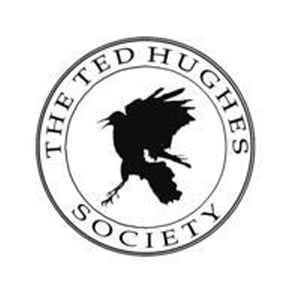Poetry by Ted Hughes
Rain-Charm for the Duchy and Other Laureate Poems (London: Faber and Faber, 1992)
Yvonne Reddick (Research Fellow, University of Central Lancashire) on Hughes, 'the Royal Witch Doctor'.
In an article published in Literary Review in March 1995, Robert Nye reviewed what he jokingly called the ‘New Selected Spells by the Royal Witch Doctor’. One of these ‘spells’ was Rain-Charm for the Duchy, Hughes’s 1984 paean to the West Country rivers, celebrating the occasion of Prince Harry’s christening. Several reviews collected in the Emory archive deride Hughes for his acceptance of the Laureateship, and lampoon the poetry – at best vaguely mystical, at worst downright weak – which sprang from it. Yet Rain-Charm was one of the better received Laureateship pieces. Nye wrote that ‘John Betjeman’s old suit hardly fits a dour Yorkshireman with ambitions to be a sort of royal witch doctor. Only one of those Laureate effusions is included here, the one for HRH Prince Harry, which has some decent lines about salmon responding to a storm’ [1].
Rain-Charm focuses more on storms and salmon than royal baptisms, more on the land of the Duchy than on the Royal Family itself. Its finished title was ‘Rain-Charm for the Duchy: A Blessed, Devout Drench for the Christening of His Royal Highness Prince Harry’. Yet in early typescripts, it was entitled ‘After the Five Month Drought’, ‘Rain Charm for Bringing Back the Salmon’, or simply ‘Rain-Charm’ [2]. While the West Country setting was in place in early drafts, the description of it as a Duchy was not. It is as if the royal christening were an afterthought, with the primary focus of the poem being the return of rain and salmon. The anthropological theories of James Frazer and Jessie Weston run as an undercurrent throughout. Diane Middlebrook finds in the ‘drenched bush’ [3] of line 24 a reference to Eliot’s reworking of Weston’s fertility myths: ‘Slyly suggestive, it points to an ancient belief in the relationship between the king’s fertility and the nation’s health – the theme ofThe Waste Land of T. S. Eliot, without the agony but with the same metaphorically wet hair’ [4]. This allusion to human fertility is apt considering that a new prince had just been born, but the fertility of the land and its rivers is a more cardinal theme. West Country rivers such as the Barle, Lyn, Mole, Little Silver and Crooked Oak are named and personified in an epic catalogue of names, a modern-day talismanic chant to celebrate the cleansing and freeing of their waters. An environmental discourse linked to Hughes’s campaigns to preserve the quality of the West Country rivers emerges. The tectonic power-surge of the line 'And the Tavy, jarred from her quartz rock-heap, feeling the moor shift (p. 805, l. 6)' is followed by a personification of the river in which ‘she’ is 'Rinsing her stale mouth, tasting tin, copper, ozone,' (p. 805, l. 7).
Alongside his characteristic language of the sublime forces of nature, Hughes includes a realistic catalogue of the pollutants which human beings have poured into the Tavy. This is the work of a poet who was not just a royal witch-doctor, but also a passionate, high-profile environmental activist.
Yvonne Reddick is Research Fellow in Modern English and World Literatures at the University of Central Lancashire. She has published numerous articles on the poetry of Ted Hughes and her other other academic interests include the politics of environmental writing, French ecological theory, the poetry of Yves Bonnefoy and the use of mythology in texts of the Modernist era and beyond.
Notes
[1] Emory MARBL archive, Ted Hughes papers, Mss 644, box 175, folder FF 30: Reviews of New Selected Poems 1957-1994.
[2]. Emory MARBL archive, Ted Hughes papers, Mss 644, box 78: Manuscripts and typescripts of Rain-Charm for the Duchy.
[3]. Ted Hughes, Collected Poems, ed. Paul Keegan (Faber & Faber, 2003), p. 803. All further citations are from this edition. Page and line numbers are included parenthetically in the text.
[4]. Diane Middlebrook, Her Husband: Hughes and Plath – A Marriage, (first published by Viking Penguin, New York, 2003; this edition Penguin Books: London, 2003,) pp. 266-267.
